
Ankle pain happens to the best of us
Whether you’re participating in a sport or just going about your every day, more likely than not, you’ll be saddled with ankle pain. According to the National Athletic Trainers Association (NATA), there are about 28,000 ankle injuries in the United States each day. Now, not all require doctor care, but if you’re saddled with ankle pain, here’s what you need to know about the various causes and how to get back on your feet.
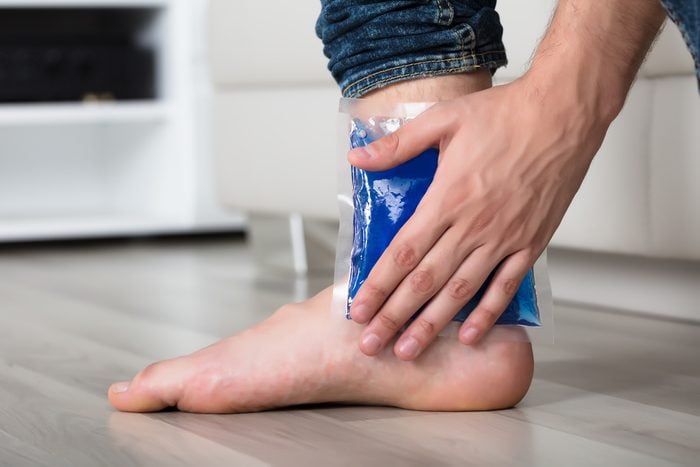
It’s a sprain
Ankle sprains are the number one sports injury, says the NATA. When a ligament in the ankle tears, that’s a sprain. If it’s a sprain, you may notice bruising and swelling and the spot may be tender to the touch; the sprain can range from mild to significant, describes the American Academy of Orthopaedic Surgeons (AAOS). Treatment involves RICE (rest, ice, compression, elevation), and in more severe cases, physical therapy or a brace. Follow these first aid steps for a sprained ankle.

It’s a strain
Strains and sprains may sound alike, but they’re different injuries. While a sprain may affect the ligament, a strain is when the muscle tears, explains the NATA. (It may also be a stretch in the muscle or tendon, according to AAOS.) Telling a strain apart from a sprain can be tough. Consider what other symptoms you’re feeling. Along with ankle pain, you may also feel muscle spasms, weakness, swelling, and cramping, says the AAOS. Practice RICE at home to treat a strain.
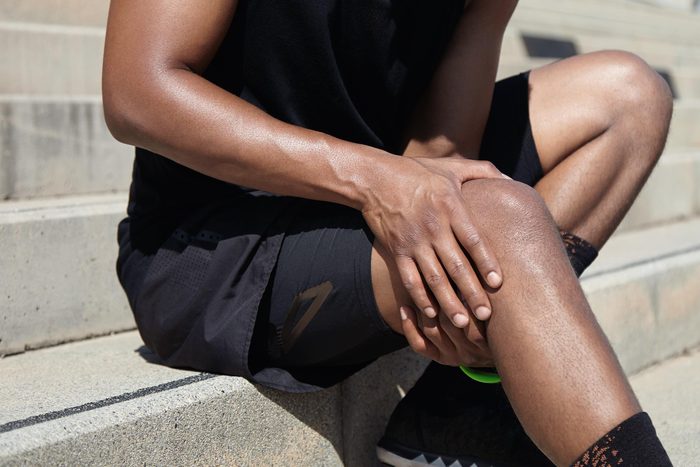
It’s an injury somewhere else
While it’s common to assume ankle pain means an ankle injury, it may actually be a problem up the chain, says Selene Parekh, MD, MBA, a foot and ankle orthopedic surgeon at Duke Health. For instance, an irritated nerve in your back or knee can show up as pain with numbness and tingling in your ankle, he says. If you’re dealing with back pain, here are 10 surprising reasons it may hurt.
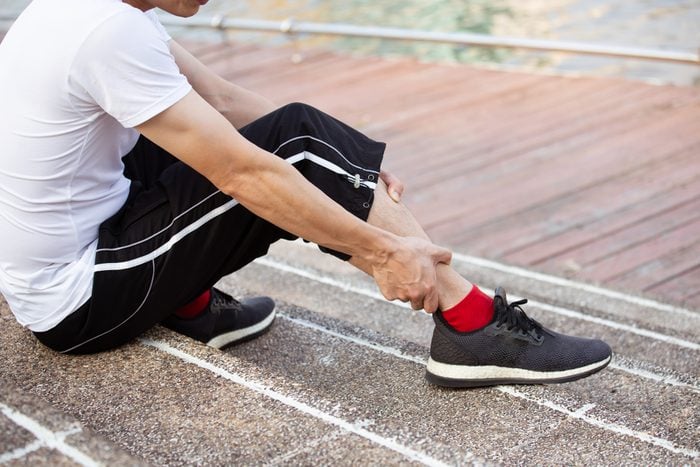
Your foot’s the problem
Because your ankle sits just above your foot, it makes sense that it can also be the source of ankle pain. One example? “Having really high arches can change the mechanics in your foot, leading to changes in the mechanics in the ankle,” says Dr. Parekh. Being extremely flatfooted can do it, too, and in this case, you may also notice swelling on the inside of your ankle, according to the Mayo Clinic. Custom orthotics or a change in footwear may help, he says.

It’s gout
Gout is a form of inflammatory arthritis: A buildup of uric acid in the blood leads to the formation of crystals in your joints. These crystals can bring on painful “attacks” (they often start in the big toe). As gout progresses, you may also suffer from attacks in other joints, including your ankle. Purine-rich foods—alcohol, fish, shellfish, and organ meats—can make gout attacks more likely. “If you notice that you feel this pain every time you eat red meat or drink beer, tell your doctor, as this is important information that can help them decide if you should be evaluated for gout,” says Dr. Parekh. If you’re diagnosed, medications can help treat and prevent flare-ups. Here are 13 natural remedies for gout.
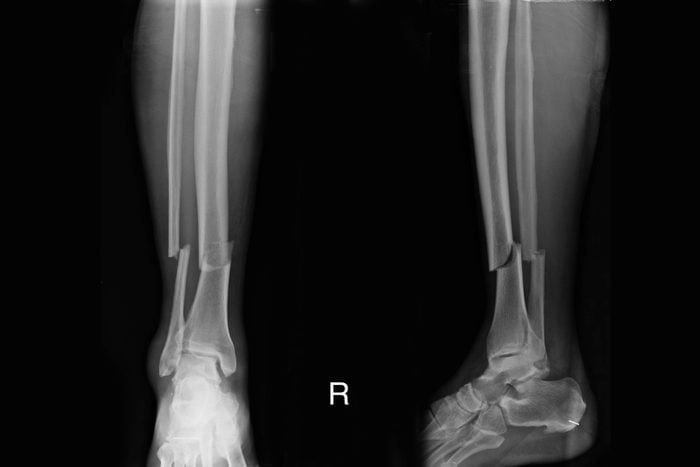
It’s a fracture
No one wants to get the news that they broke an ankle. But if your pain kicks in after you fall or hit your ankle on something—and you have swelling and discomfort that won’t go away—you could have a break. See your doctor—you may need an x-ray; in some cases, you may have to wear a boot or cast to protect the bones and allow them to heal.
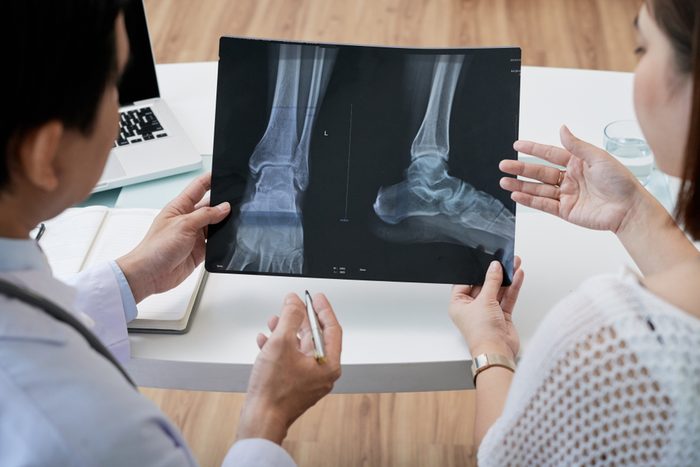
It’s a stress fracture
Many athletes are accustomed to the pain and discomfort of training—but they still need to listen to the body. “They sometimes don’t recognize that they’re in pain,” says Dr. Parekh. It isn’t until they notice swelling that they go get an MRI, only to be diagnosed with a hairline crack in an ankle bone known as a stress fracture. This is different than a regular break: A stress fracture is an overuse injury caused by repetitive movements, rather than an acute injury. If you work with your doctor to cut back on your activity, your bone will have a chance to heal properly.
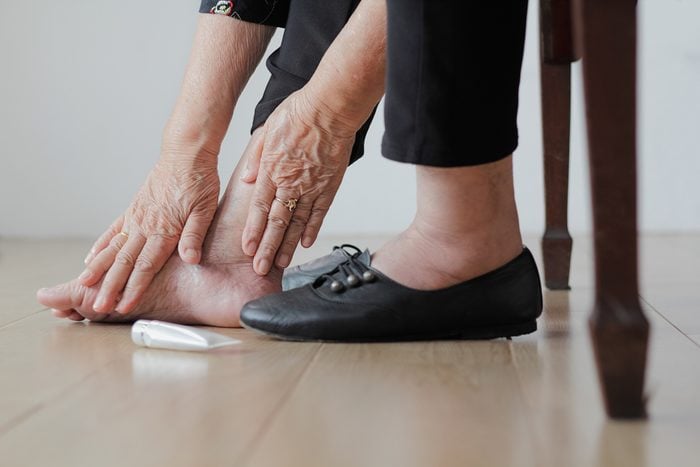
It’s arthritis
If you injure your ankle, you’ll be able to point to the spot that hurts. With chronic conditions like arthritis, the entire joint will be in pain, says Dr. Parekh. Arthritis commonly afflicts foot and ankle joints, says the AAOS, and along with pain, you may also experience stiffness. Watch for the arthritis symptoms that are easy to miss.

It’s osteoarthritis
A form of arthritis, osteoarthritis (OA) means you have damage to the cushiony cartilage in the joint, explains the AAOS. With bone rubbing on bone, the pain can be intense and worsen over time. Lifestyle changes like exercise—it’s true—and losing excess weight can help take stress off of joints, says the Arthritis Foundation.

It’s rheumatoid arthritis
The autoimmune condition often first flares up in the ankle, says the AAOS. Your body’s own immune cells attack parts of the joint, causing inflammation. One reason to suspect rheumatoid arthritis: It will attack both joints at the same time, so your doctor may suspect the condition if you have pain in both ankles. Check out 34 things you should know about arthritis.
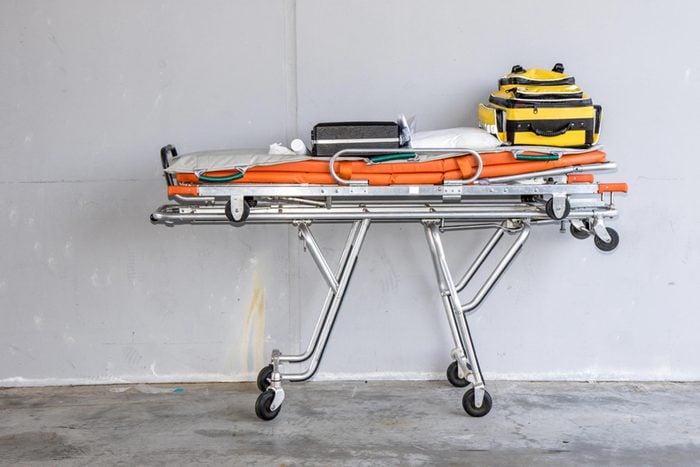
It could be an emergency
If your ankle is swollen and you have a fever, it may be an infection, warns FamilyDoctor.org, a website run by the American Academy of Family Physicians. If multiple joints are swollen, doctors may suspect rheumatic fever, a complication from untreated strep throat that can damage your heart, says the Mayo Clinic. Other signs of infection include redness, warmth, and tenderness in the joint; seek help ASAP.

When to call a doc
Because ankle pain is so common, Dr. Parekh says that doctors don’t see the vast majority of patients; they limp along and treat their pain at home until they feel better. It’s OK to practice RICE and take NSAIDs, he says, but you should see a doc if pain persists. If you have dull, achy pain that lasts for two to four weeks—or a sharp stabbing pain for two to three days—seek medical help. Pain that continues to get worse is another reason to make an appointment. Now, find out the pain symptoms you should never ignore.